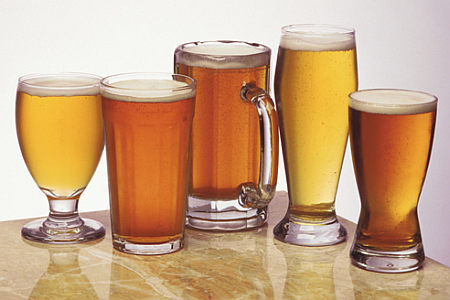 Beer, a drink referenced and appreciated by Sumerians, Egyptians e mesopotamians, is one of the most consumed and popular today. Have you ever wondered how it is produced and what are the constituents of beer?
Beer, a drink referenced and appreciated by Sumerians, Egyptians e mesopotamians, is one of the most consumed and popular today. Have you ever wondered how it is produced and what are the constituents of beer?
This seemingly simple drink is very nutritionally rich. It consists of about 90% water, some sugars, maltose, glucose and dextrins, B vitamins, amino acids, proteins, mineral elements such as calcium, phosphorus and sulphur.
In its alcoholic version, the most common has about 4% alcohol, but this content can vary between 2 and 20%, depending on the type of beer. In a freshly served glass, ready to enjoy, it is easy to detect another constituent, carbon dioxide gas.
Is it enough to add all the ingredients to get a good beer?
Starting with the choice of cereal, the process is extensive. Corn, wheat, rice and barley, malted or not, are the most common cereals for producing beer.
 To obtain malt, the cereals are germinated under controlled conditions, then roasted and ground. The flour, obtained from grinding, is mixed with water and the must is formed, under defined conditions of temperature, pH and time, until the composition is the most suitable for the type of beer to be produced.
To obtain malt, the cereals are germinated under controlled conditions, then roasted and ground. The flour, obtained from grinding, is mixed with water and the must is formed, under defined conditions of temperature, pH and time, until the composition is the most suitable for the type of beer to be produced.
Once the must is diluted and filtered, the aromatic plant, hops, is added, responsible for the formation of a good foam, aroma and bitter taste, in addition to protecting the drink against microbiological contamination. The must is sterilized using boiling, eliminating unwanted volatile substances, solubilizing and transforming the hop's bitter substances.
It's time to “give life” to beer. The cooled must is placed in fermentation vats for 7 days. At this stage, sugars obtained from cereals are converted by microorganisms, mostly by yeast Saccharomyces cerevisae, in alcohol and carbon dioxide. The process does not end here, but you can order a fresh one, to accompany the next step.
Science in the Regional Press – Ciência Viva


















Comments